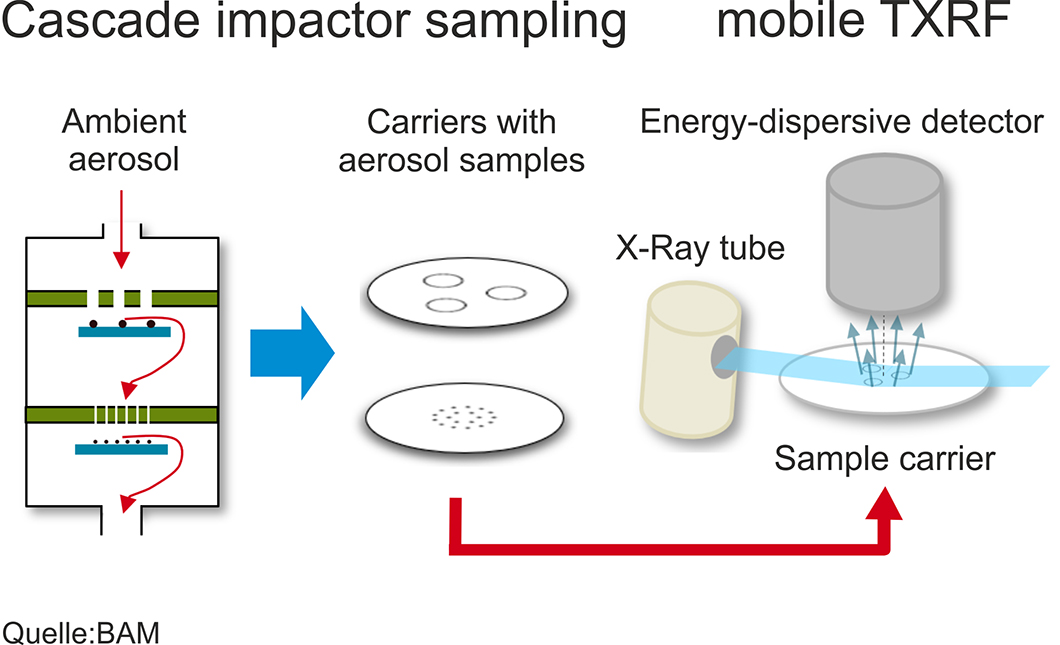
Layout of the elemental aerosol analysis by combination of a cascade impactor and mobile Total Reflection X-ray Fluorescence Spectroscopy (TXRF)
Source: BAM
Quantitative chemical analysis of airborne particulate matter (PM) is vital for the understanding of health effects in indoor and outdoor environments, as well as for enforcing European Union air quality regulations (such as Directive 2008/50/EC on ambient air quality and cleaner air for Europe and Directive 2004/107/EC relating to arsenic, cadmium, mercury, nickel and lead in ambient air). Typically, airborne particles of the PM10 fraction - i.e., particles with diameters below 10 µm - are sampled over long time periods on filters, followed by a standardized destructive lab-based analysis such as inductively coupled plasma mass spectrometry (ICP-MS). Within the AEROMET project (Aerosol Metrology for atmospheric science and air quality) - funded by the European Metrology Programme for Innovation and Research (EMPIR) - cascade impactor sampling of airborne particles (so-called aerosols) was combined for the first time with on-site and mobile total reflection X-ray fluorescence (TXRF) spectroscopy. This provides a non-destructive tool for quantifying element compositions in particle size fractions within short time intervals of only several hours. A proof of principles of this methodological approach was provided during a field campaign in Cassino, Italy. Acrylic discs proved to be suitable sampling substrates for TXRF and a lower limit of detection for elemental mass concentrations around 10 picograms per cubic meter ( 10-11 g/m³) could be achieved. The field TXRF spectrometer was calibrated with a high-precision TXRF reference, operated at the Electron Storage Ring BESSY II by the German national metrology institute PTB (Physikalisch-Technische Bundesanstalt). For this purpose, a set of artificial reference samples was produced. The results from the new approach correspond satisfactorily to those from the standard method ICP-MS on PM 10 filter samples, which has been applied in parallel during the filed campaign. More information is available from the AEROMET project website http://www.aerometproject.com/.
Quantification of Element Mass Concentrations in Ambient Aerosols by Combination of Cascade Impactor Sampling and Mobile Total Reflection X-ray Fluorescence Spectroscopy
Stefan Seeger, Janos Osan, Ottó Czömpöly, Armin Gross, Hagen Stosnach et al.
published in Atmosphere, Vol. 12, pages 309-337 , 2021
BAM, Division Materials and Air Pollutants


